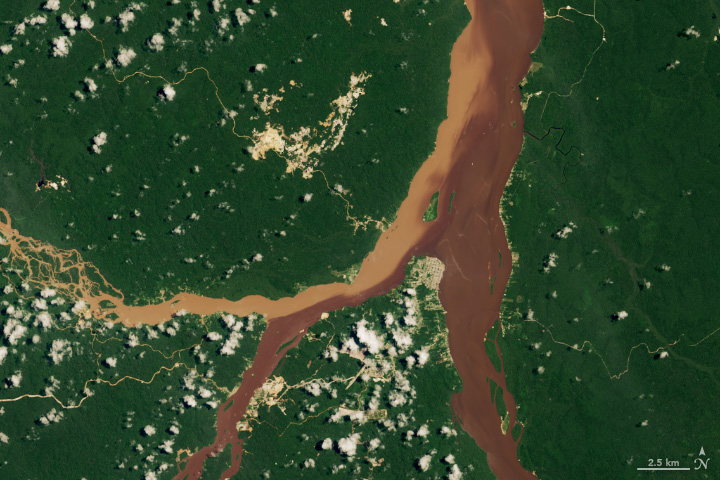



Recent Imagery
You will be directed to the NASA Visible Earth webpage when you select Images by Mission below, or click on the images at right that are randomly generated to represent four out of all possible topics.
You are here
Deep Space Climate Observatory (DSCOVR)
Status:
Current, Extended Mission
Mission Category:
Inter-Agency Partnerships
Launch Date: February 11, 2015
Launch Location: Cape Canaveral Air Force Station
Designed Life: February 11, 2017
The Deep Space Climate Observatory, or DSCOVR, is a spacecraft which orbits between Earth and the sun, observing and providing advanced warning of particles and magnetic fields emitted by the sun (known as the solar wind) which can affect power grids, communications systems, and satellites close to Earth. From its post at the Lagrange point 1 (or L1), approximately one million miles from Earth, DSCOVR also observes our planet and provides measurements of the radiation reflected and emitted by Earth and images of the sunlit side of Earth for science applications.
The DSCOVR mission is a partnership between NOAA, NASA and the U.S. Air Force and is operated by NOAA.
NASA, using NOAA funds, refurbished the DSCOVR satellite and instruments, which had been in storage for several years. NASA also developed the ground system used to operate the DSCOVR satellite. The U.S. Air Force provided the SpaceX Falcon 9 launch vehicle for the DSCOVR mission.
Key Deep Space Climate Observatory Facts
| Mission/Portal Page: | https://www.nesdis.noaa.gov/current-satellite-missions/currently-flying/dscovr-deep-space-climate-observatory |
|---|---|
| Launch Vehicle: | Space X Falcon 9 |
| Origination: | NOAA |
| Instruments: |
PlasMag NISTAR EPIC |
| Project Scientist(s): |
Adam Szabo |
Relevant Science Focus Areas:
- Solar wind activity
- Reflected and emitted radiation from the entire sunlit face of the Earth
- Ozone amounts, aerosol amounts, cloud height and phase, vegetation properties, hotspot land properties and UV radiation estimates at Earth's surface

